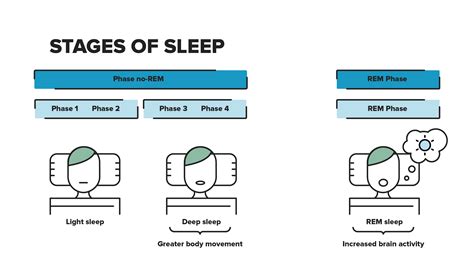Optimal post-workout recovery for sustained gains & peak performance?

The Critical Role of Recovery in Your Fitness Journey
In the relentless pursuit of fitness goals – be it building muscle, increasing endurance, or enhancing overall athletic performance – the spotlight often shines brightest on the intensity and duration of workouts. However, the true secret weapon for sustained gains and peak performance lies not just in what you do during your training, but more significantly, in what you do after it. Post-workout recovery is not merely a period of rest; it’s an active, multifaceted process essential for muscle repair, energy replenishment, adaptation, and preventing overtraining and injury.
Neglecting proper recovery can lead to plateaus, decreased performance, chronic fatigue, and a higher risk of injury, effectively undermining all your hard work in the gym. Understanding and implementing optimal recovery strategies is the differentiator between short-term progress and long-term, consistent improvement.

Fueling Your Recovery: The Power of Nutrition
What you eat immediately and throughout your recovery period plays a pivotal role in how quickly and effectively your body repairs and rebuilds itself. Nutrition is the cornerstone of post-workout recovery, dictating the raw materials available for physiological repair processes.
Macronutrients: Protein and Carbohydrates
- Protein: Essential for muscle protein synthesis (MPS), the process of repairing muscle damage and building new muscle tissue. Aim for a high-quality protein source (e.g., whey, casein, lean meats, eggs, legumes) within 30-60 minutes post-workout, and continue regular protein intake throughout the day.
- Carbohydrates: Crucial for replenishing glycogen stores, your body’s primary energy source. Intense workouts deplete these stores, and consuming complex carbohydrates (e.g., whole grains, fruits, vegetables) helps refuel muscles, preparing them for the next session.
Micronutrients and Electrolytes
Don’t overlook the vital role of vitamins, minerals, and electrolytes. These support countless enzymatic reactions, reduce inflammation, boost immunity, and maintain fluid balance. Incorporate a wide variety of fruits, vegetables, and whole foods to ensure you’re getting a full spectrum of micronutrients. Electrolytes like sodium, potassium, and magnesium, often lost through sweat, are critical for nerve and muscle function and can be replenished through balanced meals and electrolyte-rich drinks.

The Unsung Heroes: Hydration and Sleep
While often underestimated, proper hydration and adequate sleep are non-negotiable for optimal recovery and performance.
Rehydrating for Performance
Sweat loss during exercise can lead to dehydration, impacting performance and recovery. Even mild dehydration can impair cognitive function, reduce endurance, and hinder nutrient transport. Drink water consistently throughout the day, and particularly before, during, and after your workouts. For longer or more intense sessions, consider electrolyte-infused beverages to replace lost minerals.
Prioritizing Quality Sleep
Sleep is arguably the most powerful recovery tool. During deep sleep cycles, your body releases growth hormone (GH), which is vital for muscle repair, growth, and fat metabolism. Lack of sleep elevates cortisol levels (a stress hormone) and impairs glucose metabolism, hindering recovery and increasing muscle breakdown. Aim for 7-9 hours of quality sleep per night, establishing a consistent sleep schedule and optimizing your sleep environment.

Beyond Rest: Active Recovery and Mobility
Recovery isn’t just about passive rest; strategic active recovery can significantly enhance the process.
- Light Activity: Low-intensity activities like walking, cycling, or swimming can increase blood flow to muscles, helping to flush out metabolic waste products and deliver fresh nutrients without causing further stress.
- Stretching and Foam Rolling: These techniques improve flexibility, range of motion, and reduce muscle soreness by breaking up adhesions and increasing blood flow. Incorporate dynamic stretches before workouts and static stretches/foam rolling post-workout or on rest days.
- Massage and Myofascial Release: Professional massages or self-myofascial release tools can aid in muscle recovery, reduce tension, and improve circulation.

Holistic Approach: Stress Management and Listening to Your Body
Chronic stress, whether physical or psychological, elevates cortisol, which can impede recovery and muscle growth. Incorporating stress-reduction techniques like meditation, deep breathing exercises, or hobbies can significantly contribute to overall well-being and recovery. Moreover, learning to listen to your body’s signals is paramount. Recognize signs of overtraining such as persistent fatigue, decreased performance, irritability, or prolonged soreness, and adjust your training and recovery schedule accordingly. Sometimes, an extra rest day is exactly what your body needs to come back stronger.
Conclusion: Recovery as the Foundation for Success
Optimal post-workout recovery is not an optional add-on; it’s an integral and indispensable component of any effective fitness regimen. By prioritizing proper nutrition, ensuring adequate hydration, valuing quality sleep, embracing active recovery, and managing stress, you create an environment where your body can not only repair and adapt but thrive. Investing in your recovery is investing in your long-term health, performance, and the sustained gains that will propel you toward your peak athletic potential.








